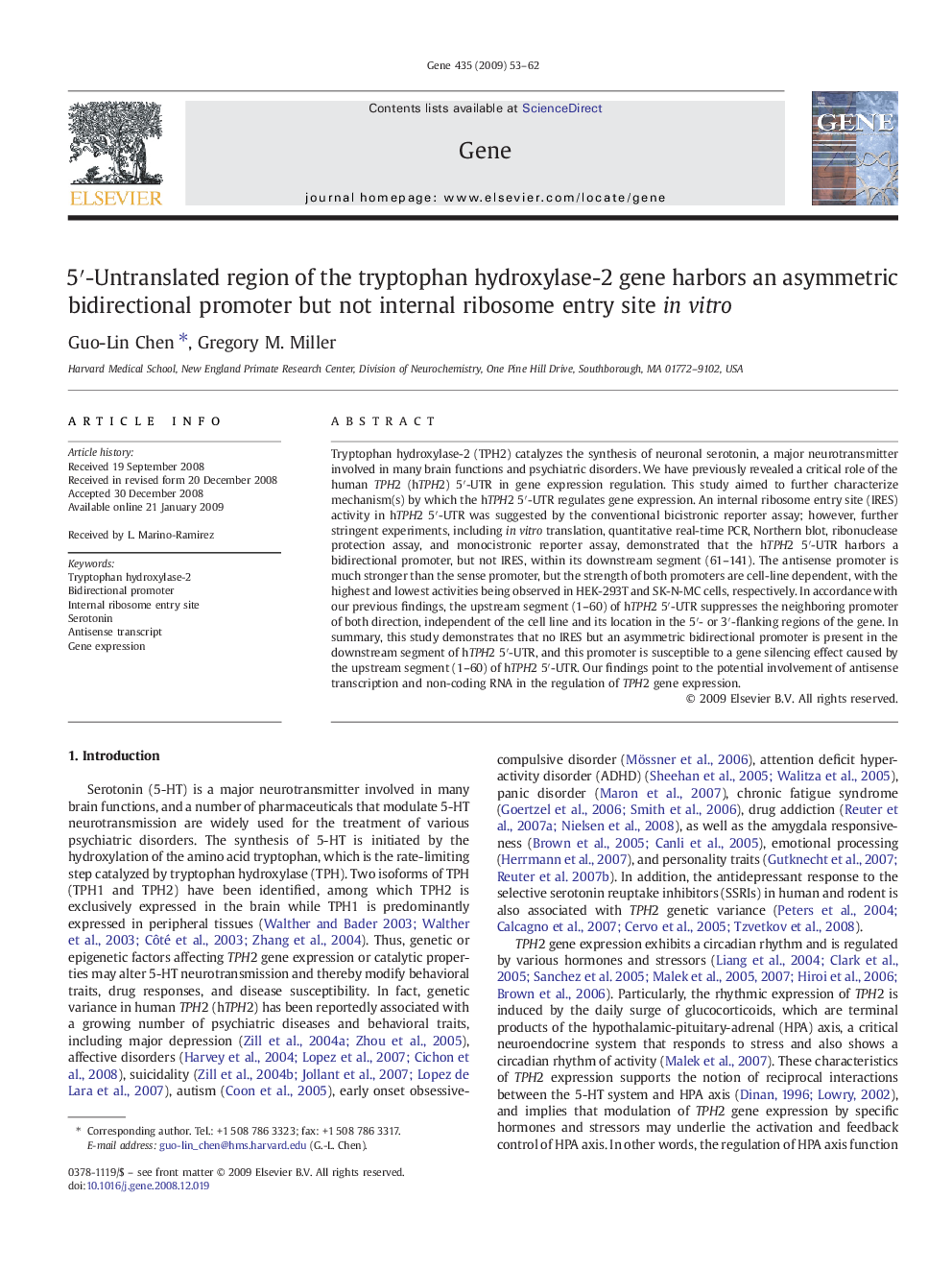| Article ID | Journal | Published Year | Pages | File Type |
|---|---|---|---|---|
| 2818994 | Gene | 2009 | 10 Pages |
Abstract
Tryptophan hydroxylase-2 (TPH2) catalyzes the synthesis of neuronal serotonin, a major neurotransmitter involved in many brain functions and psychiatric disorders. We have previously revealed a critical role of the human TPH2 (hTPH2) 5â²-UTR in gene expression regulation. This study aimed to further characterize mechanism(s) by which the hTPH2 5â²-UTR regulates gene expression. An internal ribosome entry site (IRES) activity in hTPH2 5â²-UTR was suggested by the conventional bicistronic reporter assay; however, further stringent experiments, including in vitro translation, quantitative real-time PCR, Northern blot, ribonuclease protection assay, and monocistronic reporter assay, demonstrated that the hTPH2 5â²-UTR harbors a bidirectional promoter, but not IRES, within its downstream segment (61-141). The antisense promoter is much stronger than the sense promoter, but the strength of both promoters are cell-line dependent, with the highest and lowest activities being observed in HEK-293T and SK-N-MC cells, respectively. In accordance with our previous findings, the upstream segment (1-60) of hTPH2 5â²-UTR suppresses the neighboring promoter of both direction, independent of the cell line and its location in the 5â²- or 3â²-flanking regions of the gene. In summary, this study demonstrates that no IRES but an asymmetric bidirectional promoter is present in the downstream segment of hTPH2 5â²-UTR, and this promoter is susceptible to a gene silencing effect caused by the upstream segment (1-60) of hTPH2 5â²-UTR. Our findings point to the potential involvement of antisense transcription and non-coding RNA in the regulation of TPH2 gene expression.
Keywords
Related Topics
Life Sciences
Biochemistry, Genetics and Molecular Biology
Genetics
Authors
Guo-Lin Chen, Gregory M. Miller,
